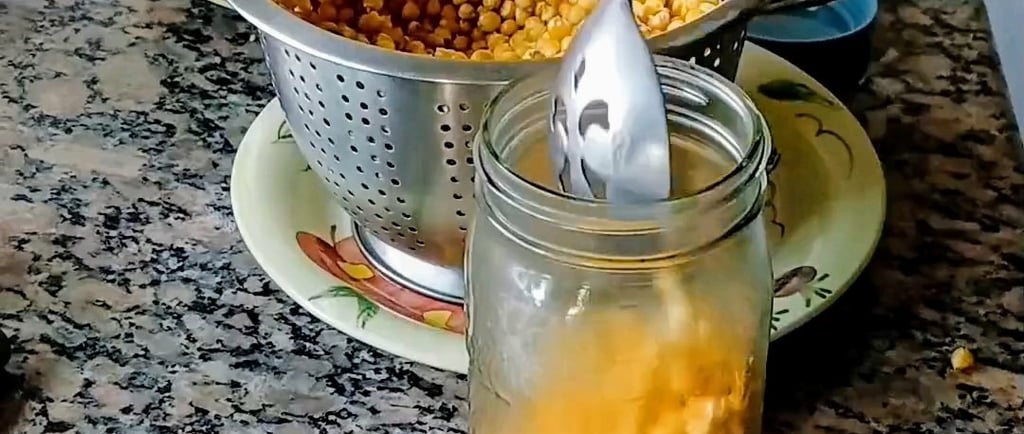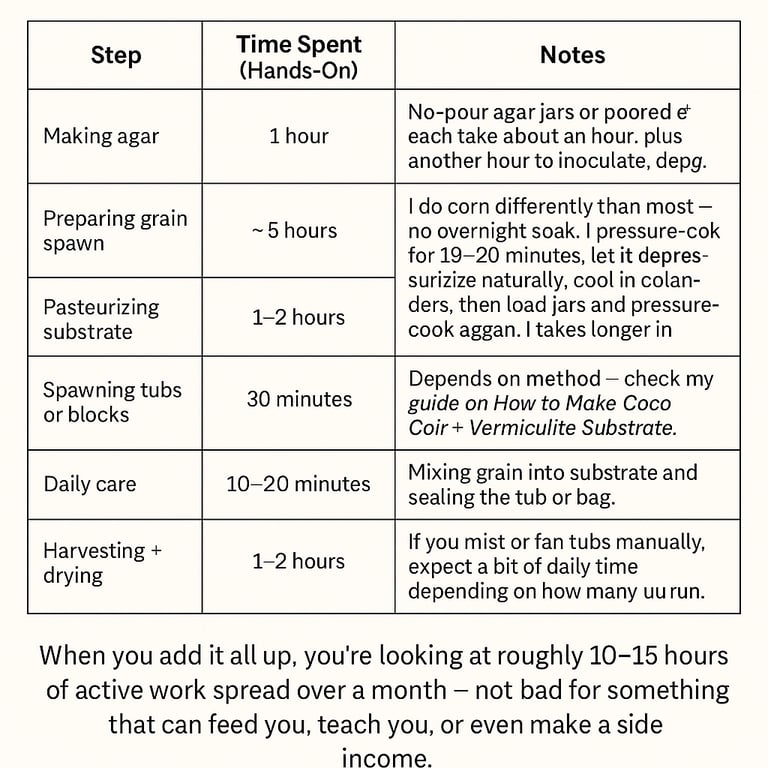How Long Does It Take to Grow Mushrooms? (Full Breakdown)
Curious how long mushrooms take to grow? Get a realistic timeline and hands-on hours from agar to harvest, plus real-world time-saving tips.
GROWING
10/16/20253 min read


How Long Does It Really Take to Grow Mushrooms? (Time + Hours Breakdown)
When people ask how long it takes to grow mushrooms, they’re usually thinking about days until harvest — but almost nobody talks about how many hours it actually takes to make it happen.
When I first got into mycology, I didn’t think about that either. Everyone wants to know “how long until I can harvest?” but not “how much time will I spend doing it?”
If you work full-time, you’ll soon find that mushroom growing can easily fill your evenings. You get home from work, knock out five hours of grain spawn prep, then spend another couple the next night inoculating jars, cleaning tubs, or wiping down your work area.
Growing mushrooms isn’t hard — but it’s definitely hands-on.
Part 1: How Long From Start to Harvest
The total grow time depends on your species and method, but here’s a general timeline:
Spore or liquid culture to colonized grain: 1–3 weeks
Grain to fully colonized substrate: 1–2 weeks
Pinning to harvest: 5–10 days
That means roughly 4–6 weeks from start to finish for most species.
→ How to Store Mushroom Cultures Long Term
Part 2: The Real-World Hours Behind a Grow
Part 3: Why It Feels Like More Work
Someone once said, “If you don’t like doing dishes, you won’t like mycology,” and it’s kind of true. There’s a lot of cleaning — jars, tubs, tables, tools.
But there’s something therapeutic about it too. Many growers, myself included, enjoy the rhythm: sterilize, inoculate, clean, repeat. It becomes a process you look forward to once you get in the groove.
⏱️ Time-Saving Tips for Busy Growers
One of the biggest surprises for new growers is how much time goes into cleaning — jars, tubs, tools, and your workspace. But there are ways to save hours each week once you’ve got your process down. Here are a few that have helped me:
Buy pre-made grain bags. This completely removes the need to clean or prepare jars. Just inoculate the bags and move straight to colonization.
Use grow bags instead of tubs. You won’t have to clean tubs between grows, and you can toss or reuse the bags depending on your setup.
Buy pre-poured agar plates. I like no-pour agar jars, but prepping them takes extra time. If you use sterile agar plates, you only need to sterilize the agar and pour — no extra cleaning. (Link to your “No-Pour Agar” post here.)
Prep jars ahead of time. When I know I’ll be making a big batch of grain jars, I clean them all, install lids and filters, and get everything ready a day before. Then the next day I just make the grain and fill them.
Try ketchup cup agar. It’s faster to prep than no-pour agar jars and easier to toss after use. See my post on how to make ketchup cup agar
It’s little systems like this that make mycology sustainable long-term — especially if you’re working full-time. You’ll spend more time growing and less time cleaning.
Part 4: Final Thoughts
The grow cycle may take a few weeks, but most of that time is waiting, not working.
Knowing both the calendar time and the actual hours helps you plan better — and it reminds you that mushroom growing isn’t just about the harvest.
It’s about the process.
Next Steps in Your Mycology Journey:
These posts pair perfectly with this one — check them out next:


Cultivation
Helping you master gourmet mushroom cultivation — on or off the grid.
© 2024. All rights reserved.
